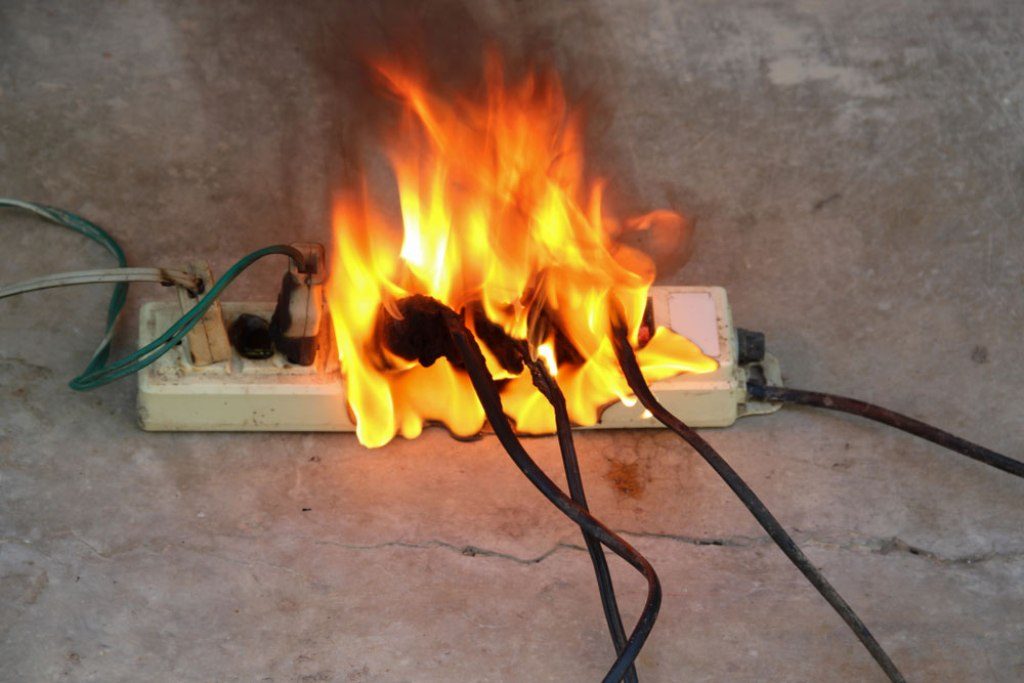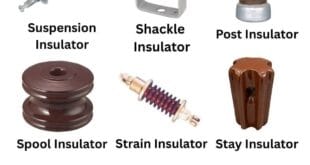Common Electrical Faults and Their Causes
Introduction
Electrical systems are an integral part of modern life, powering everything from our homes to our workplaces and industries. However, like any other complex system, electrical systems are susceptible to faults and failures. These faults can range from minor inconveniences to major safety hazards. Understanding common electrical faults and their causes is crucial for homeowners, businesses, and anyone responsible for electrical maintenance. In this comprehensive guide, we will explore various electrical faults, their underlying causes, and preventive measures to mitigate these issues.

List of Common Electrical Faults
Overloading and Circuit Breaker Tripping
One of the most common electrical faults homeowners face is overloading and circuit breaker tripping. This issue occurs when too many electrical devices are connected to a single circuit, exceeding its capacity. The circuit breaker’s primary role is to protect the circuit and your electrical system by interrupting the flow of electricity when an overload or short circuit is detected.
Causes: a. Plugging in too many devices on a single circuit. b. Using extension cords and power strips excessively. c. Faulty or outdated circuit breakers.
Prevention: a. Distribute your electrical devices across multiple circuits. b. Avoid daisy-chaining power strips and extension cords. c. Replace old or malfunctioning circuit breakers.
Electrical Surges and Voltage Fluctuations
Electrical surges and voltage fluctuations can damage sensitive electronic equipment and appliances. Surges are sudden, brief increases in voltage, while fluctuations are constant variations in voltage levels.
Causes: a. Lightning strikes. b. Faulty wiring. c. Utility company voltage fluctuations.
Prevention: a. Install surge protectors for sensitive devices. b. Ensure proper grounding for your electrical system. c. Consult your utility company for voltage regulation solutions.
Short Circuits
A short circuit occurs when a low-resistance path connects two conductors with different potentials. This results in a sudden, excessive flow of current, which can lead to fires or damage to electrical components.
Causes: a. Exposed wires touching each other. b. Damaged insulation. c. Faulty appliances or equipment.
Prevention: a. Regularly inspect and replace damaged wiring. b. Ensure appliances and equipment are in good condition. c. Use circuit breakers and fuses to protect against short circuits.
Ground Faults
Ground faults happen when an unintended electrical connection occurs between a live conductor and a grounding conductor. This can pose serious risks of electrical shock and fires.
Causes: a. Damaged wiring. b. Faulty appliances or equipment. c. Moisture or water exposure.
Prevention: a. Install ground fault circuit interrupters (GFCIs) in wet areas. b. Regularly inspect and replace damaged wiring. c. Keep electrical equipment away from water sources.
Faulty Outlets and Switches
Faulty outlets and switches can cause electrical devices to malfunction or become a safety hazard. Signs of faulty outlets include loose connections, overheating, or sparking.
Causes: a. Wear and tear over time. b. Poor installation. c. Corrosion.
Prevention: a. Replace damaged outlets and switches promptly. b. Hire a qualified electrician for installations. c. Keep outlets and switches dry and clean.
Electrical Fires
Electrical fires are a severe consequence of various electrical faults. They can result from overheated wires, faulty connections, or electrical malfunctions.
Causes: a. Overloading circuits. b. Short circuits. c. Faulty appliances. d. Poorly maintained electrical systems.
Prevention: a. Regularly inspect and maintain your electrical system. b. Replace damaged wiring and faulty appliances. c. Install smoke detectors and fire extinguishers.
Flickering Lights
Flickering lights can be annoying and indicate electrical problems. This issue can occur for various reasons, from minor disturbances to more severe faults.
Causes: a. Loose or damaged light bulbs. b. Faulty switches or dimmer switches. c. Voltage fluctuations.
Prevention: a. Ensure bulbs are securely screwed in. b. Replace faulty switches. c. Address underlying voltage issues with professional help.
High Energy Bills
Unexpectedly high energy bills can result from energy wastage or inefficient electrical systems. Identifying the root causes can help save energy and reduce costs.
Causes: a. Inefficient appliances. b. Poor insulation. c. Overuse of heating or cooling systems.
Prevention: a. Upgrade to energy-efficient appliances. b. Improve insulation and seal gaps in your home. c. Implement energy-saving habits.
Electrical Shocks
Electrical shocks can occur when there is a fault in the electrical system, posing a significant risk to individuals. These shocks can range from mild discomfort to severe injury or even death.
Causes: a. Faulty wiring. b. Damaged or exposed wires. c. Lack of grounding.
Prevention: a. Hire a professional electrician for repairs and maintenance. b. Avoid contact with exposed wires. c. Install GFCIs in wet areas.
Prevention Tips
In conclusion, understanding common electrical faults and their causes is crucial for maintaining a safe and functional electrical system. By being aware of these issues and taking proactive measures to prevent them, you can protect your home, workplace, and loved ones from electrical hazards. Remember to:
- Distribute electrical loads evenly across circuits to prevent overloading and circuit breaker tripping.
- Use surge protectors to safeguard sensitive electronic devices from electrical surges and voltage fluctuations.
- Regularly inspect and replace damaged wiring to prevent short circuits and ground faults.
- Address faulty outlets and switches promptly to avoid malfunctions and safety hazards.
- Maintain your electrical system to prevent electrical fires, and install smoke detectors and fire extinguishers for added safety.
- Address flickering lights and high energy bills by identifying and resolving the root causes.
- Take electrical shocks seriously and consult a professional for any electrical issues or concerns.
By following these prevention tips and staying vigilant, you can ensure a safe and reliable electrical system in your home or workplace. Electrical faults may be common, but with proper care and maintenance, they can be significantly minimized.
FAQs
1. What should I do if I experience a circuit breaker tripping frequently in my home?
Answer: Frequent circuit breaker trips could be a sign of overloading or a short circuit. To address this issue, start by unplugging some devices from the overloaded circuit and resetting the breaker. If the problem persists, consult a qualified electrician to inspect and potentially upgrade your electrical panel or redistribute loads across circuits.
2. How can I protect my sensitive electronics from electrical surges?
Answer: To protect sensitive electronics, consider using surge protectors or uninterruptible power supplies (UPS). These devices can absorb excess voltage during surges and provide a stable power supply. Make sure to invest in high-quality surge protectors and replace them if they’ve absorbed a significant surge.
3. My lights are flickering. Is this a serious electrical issue?
Answer: Flickering lights can result from loose bulbs, faulty switches, or voltage fluctuations. Start by checking and tightening light bulbs and switches. If the problem persists, consult an electrician to investigate and address any underlying wiring or electrical issues, as flickering lights could indicate a more significant problem.
4. What should I do if I suspect a ground fault in my electrical system?
Answer: Ground faults can be hazardous. If you suspect one, it’s crucial to act promptly. Install Ground Fault Circuit Interrupters (GFCIs) in wet areas like kitchens and bathrooms. If you experience persistent GFCI trips or suspect a ground fault elsewhere, consult an electrician to identify and repair the issue, as ground faults can pose a serious risk of electrical shock.
5. Can I handle electrical repairs and maintenance myself?
Answer: While there are minor electrical tasks you can do, such as changing light bulbs and resetting tripped breakers, it’s generally recommended to hire a licensed electrician for any electrical repairs or maintenance. Electrical work can be hazardous, and professionals have the knowledge and tools to ensure safety and compliance with local electrical codes.
6. How can I reduce my high energy bills caused by electrical inefficiencies?
Answer: To lower high energy bills, you can:
- Upgrade to energy-efficient appliances and LED lighting.
- Improve insulation and seal gaps in your home to reduce heating and cooling costs.
- Set thermostats to energy-saving temperatures when not at home.
- Unplug devices or use smart power strips to prevent energy vampire consumption.
- Schedule regular HVAC system maintenance to ensure it operates efficiently.
- Consider investing in renewable energy sources like solar panels for long-term savings.
Conclusion
In conclusion, a comprehensive understanding of common electrical faults and their underlying causes is essential for maintaining a safe and functional electrical system in your home or workplace. Electrical issues can range from minor inconveniences to severe safety hazards, making it imperative to address them promptly and effectively.
By following the preventive measures outlined in this article, such as distributing electrical loads evenly across circuits, using surge protectors, inspecting and maintaining your electrical system, and seeking professional help when necessary, you can significantly reduce the likelihood of encountering these electrical faults.
Remember that electrical safety should always be a top priority. Regular inspections, proper maintenance, and adherence to safety protocols are crucial for protecting your property and the people within it. Electrical faults may be common, but with vigilance and the right precautions, you can ensure a safe and reliable electrical system that serves you well for years to come.
 Electrical Engineering World Wiring a Brighter Tomorrow!
Electrical Engineering World Wiring a Brighter Tomorrow!


